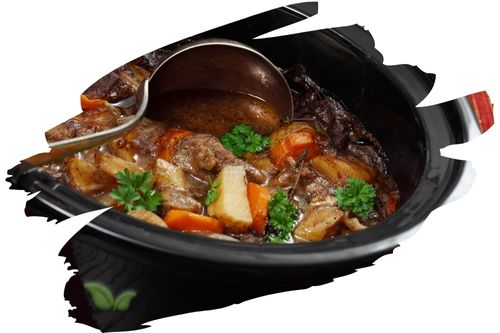
Introduction
Herbs play a vital role in enhancing the taste and aroma of dishes, offering a wide array of flavors to choose from. Tarragon and Chervil are among the many herbs that chefs and home cooks turn to for their unique contributions to various cuisines. Let's embark on a flavorful journey to understand the nuances between these two herbs.
Tarragon vs. Chervil
Tarragon: The Anise-like Aroma
Tarragon, scientifically known as Artemisia dracunculus, is a perennial herb with slender, aromatic leaves. It is renowned for its distinct anise-like flavor with notes of licorice and a hint of sweetness. Here's what sets Tarragon apart:
- Flavor Profile: Anise-like, with a mild licorice flavor and subtle sweetness.
- Culinary Uses: Commonly used in French cuisine, Tarragon is a key ingredient in béarnaise sauce, fines herbes, and tarragon vinegar. It pairs well with poultry, seafood, and vegetables.
- Fresh vs. Dried: Fresh Tarragon is preferred for its superior flavor, but dried Tarragon can be used when fresh is unavailable.
Tarragon's unique flavor profile makes it an essential herb in classic French cooking, adding depth and sophistication to a wide range of dishes.
Chervil: The Delicate Elegance
Chervil, also known as Anthriscus cerefolium, is a delicate annual herb with feathery, fern-like leaves. It offers a mild and subtle flavor reminiscent of parsley with a touch of anise. Here's a brief overview of Chervil:
- Flavor Profile: Mild and fresh, with hints of parsley and anise.
- Culinary Uses: Often used in French fines herbes blend, Chervil is best enjoyed fresh and is a wonderful addition to salads, omelets, and creamy soups. It's also used as a garnish for its delicate appearance.
- Freshness Matters: Chervil is best used fresh, as drying diminishes its flavor significantly.
Chervil's delicate and fresh taste adds a touch of elegance to dishes, making it a favorite in French and European cuisines.
Cooking with Tarragon and Chervil
Now that we've distinguished between Tarragon and Chervil, let's explore how to use them to enhance your culinary creations:
Tarragon: Elevating French Flavors
1. Classic Béarnaise Sauce
Tarragon is a star ingredient in the classic French béarnaise sauce, where its anise-like flavor beautifully complements the richness of butter and egg yolks.
2. Roasted Chicken and Seafood
Sprinkle fresh Tarragon over roasted chicken or seafood dishes to infuse them with a delightful herbaceous aroma and flavor.
3. Tarragon Vinegar
Make your own tarragon vinegar by steeping fresh Tarragon leaves in white wine vinegar. This aromatic vinegar can be used in salad dressings and marinades.
Chervil: Fresh and Vibrant
1. Spring Salads
Enhance your spring salads with a generous sprinkle of fresh Chervil leaves, imparting a mild, fresh flavor that pairs wonderfully with greens and vegetables.
2. Omelets and Scrambles
Add a handful of chopped Chervil to your omelets and scrambled eggs for a burst of freshness that elevates your breakfast.
3. Garnish with Elegance
Use Chervil as a garnish for creamy soups, seafood dishes, and appetizers to bring a touch of elegance to your presentations.
FAQs
Are Tarragon and Chervil interchangeable in recipes?
While they have some similarities, Tarragon has a more pronounced anise-like flavor, while Chervil offers a milder and fresher profile. Use them according to your recipe's requirements.
Can I use dried Tarragon or Chervil instead of fresh?
Fresh herbs are preferred for their superior flavor, but if fresh is unavailable, you can use dried Tarragon or Chervil in a pinch. However, adjust the quantity accordingly, as dried herbs are more concentrated.
What are some dishes that benefit from Tarragon and Chervil?
Tarragon elevates dishes like béarnaise sauce, roasted chicken, and seafood, while Chervil enhances salads, omelets, and creamy soups.
Where can I find fresh Tarragon and Chervil?
You can typically find fresh Tarragon and Chervil in well-stocked grocery stores, farmer's markets, or you can even grow them in your own herb garden for a constant supply.
Can I freeze fresh Tarragon or Chervil for later use?
Yes, you can freeze fresh Tarragon or Chervil by chopping them and placing them in an airtight container or freezing them in ice cube trays with water. However, note that the texture may change after thawing.
Conclusion
In the world of herbs, Tarragon and Chervil stand as unique options, each offering its own special touch to culinary creations. Whether you're looking for the anise-like notes of Tarragon or the delicate elegance of Chervil, these herbs are sure to elevate your dishes with their distinct flavors. Embrace their individuality and let your culinary skills flourish with their use.
Alert: While spices can have many beneficial properties for health, using them for medical purposes should be done under the guidance and supervision of a healthcare professional or specialist. Some spices may interact with medications or cause adverse reactions in certain individuals, and it is important to use them safely and appropriately. If you are considering using spices for a medical condition, it is important to consult with a healthcare professional before doing so.




















































